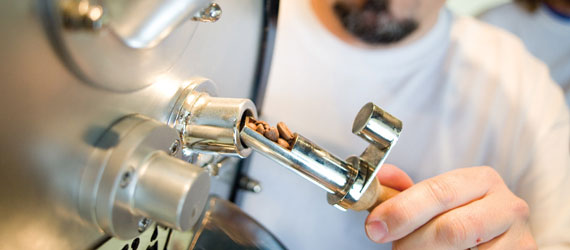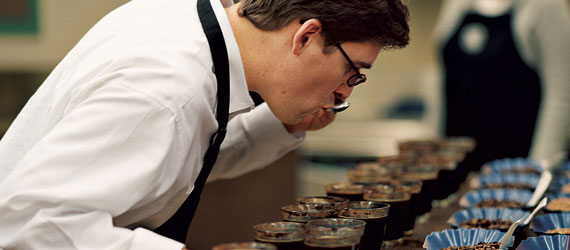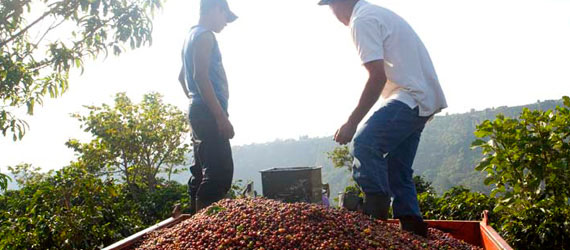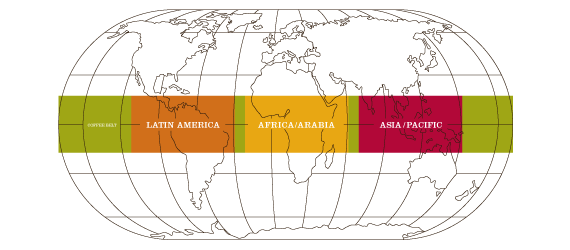The Starbucks Roast® is more than a color – it’s a philosophy of helping each bean reach its maximum potential.
We started roasting coffee in 1971, and it was the way we approached our craft that created so many Starbucks fans in those early days. Our coffee stood out not only because it was darker, but also because it had more flavor.
Coffee loses moisture and weight when it is roasted, which means there’s less to sell afterwards. A pound of coffee loses about 10 to 14% of its weight when it’s handled by a commercial roaster. We roast our coffee a little longer, to bring out more of the flavor. We lose 18 to 25% of the weight in doing this, but the difference in taste is worth it.
The transformation begins when green coffee beans are heated in a large rotating drum. After 5 to 7 minutes of intense heat, the beans turn a yellow color and smell a little like popcorn. Then the “first pop” occurs – the beans double in size, crackling as they expand. They are now light brown. If you stopped the process here to sample the coffee, you’d taste sour, one-dimensional flavor notes. Those more complex, wonderful flavors haven’t yet developed.
After 10 minutes in the roaster, the beans reach an even brown color, and oil starts to sweat off their surface. Somewhere between 11 and 15 minutes (it’s different for every coffee), the beans start to develop their full flavor potential. The “second pop” signals the moment is at hand. As the beans are released into the cooling tray, the smell of freshly roasted coffee fills the air along with the sound of applause created by the final clapping of the “second pop.”











